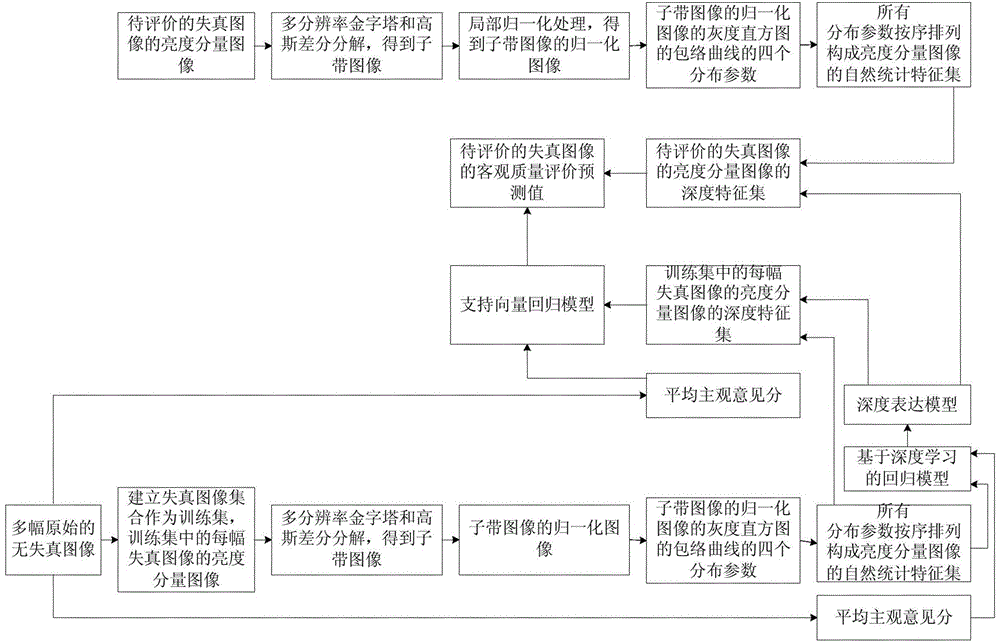A No-Reference Image Quality Objective Evaluation Method Based on Deep Learning
A quality objective evaluation, deep learning technology, applied in image analysis, image communication, image data processing and other directions, can solve problems such as unfavorable real-time applications, low evaluation accuracy, and inaccuracy.
- Summary
- Abstract
- Description
- Claims
- Application Information
AI Technical Summary
Problems solved by technology
Method used
Image
Examples
Embodiment Construction
[0027] The present invention will be further described in detail below in conjunction with the accompanying drawings and embodiments.
[0028] Since reference images cannot be obtained in many applications, the no-reference image quality assessment method is the most practical and challenging research topic, and the traditional no-reference image quality assessment has high computational complexity and time complexity, while the agreement between the objective quality of predictions and subjective perception is poor. The present invention extracts natural statistical features in the spatial domain by decomposing images, and the time complexity is very low. At the same time, multi-resolution pyramid and Gaussian difference decomposition can be used to perform multi-resolution analysis and multi-scale texture analysis on images, thereby extracting better natural statistics. feature; before the traditional shallow learning algorithm returns, the present invention adds a deep expr...
PUM
 Login to View More
Login to View More Abstract
Description
Claims
Application Information
 Login to View More
Login to View More - R&D
- Intellectual Property
- Life Sciences
- Materials
- Tech Scout
- Unparalleled Data Quality
- Higher Quality Content
- 60% Fewer Hallucinations
Browse by: Latest US Patents, China's latest patents, Technical Efficacy Thesaurus, Application Domain, Technology Topic, Popular Technical Reports.
© 2025 PatSnap. All rights reserved.Legal|Privacy policy|Modern Slavery Act Transparency Statement|Sitemap|About US| Contact US: help@patsnap.com



